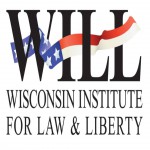Wisconsin’s Open Enrollment Program Provides Critical School Choice Option for 62,000 Students
New study profiles open enrollment program, examines school district impact
The News: With the approach of National School Choice Week, January 24-29, the Wisconsin Institute for Law & Liberty (WILL) provides a first of its kind look at Wisconsin’s open enrollment program, arguably Wisconsin’s largest and most popular school choice program. Wisconsin’s open enrollment program serves more than 62,000 Wisconsin students who choose to attend public schools outside of their designated attendance zone. This new study charts the history of the program, the fiscal and enrollment impacts on school districts, and recommendations for reform.
Diving Deeper: For more than 20 years, Wisconsin’s open enrollment program has provided a vital option for Wisconsin families seeking public school options beyond their designated attendance zone. WILL’s new study, Public School Choice in Wisconsin: A Work in Progress, by Jessica Holmberg and Will Flanders, details the growth and impact of Wisconsin’s open enrollment program.
- The open enrollment program is Wisconsin’s largest school choice program. More than 62,000 students across the state participated during the 2018-19 school year. This is approximately 20,000 more than the next largest choice program—private school choice (43,000). The program continues to grow between .3 and .6% each year.
- Parents make open enrollment decisions based on academics. With controls for a number of other variables, Forward Exam proficiency predicts positive open enrollment into a district.
- Districts with more low-income students see enrollment declines. On average, students enroll out of high-poverty districts and into lower-poverty districts.
- The most common reason for denying an applications is “space.” We found that students with disabilities are frequently and unfairly denied for “space” reasons. We also found that space is the number one reason for denial in general.
- Open enrollment increases ethnic diversity within a district. Our research finds that the open enrollment program tends to increase the diversity of schools, as students move from districts with differing demographics.
The Quote: WILL Policy Associate, Jessica Holmberg, said, “As we prepare to celebrate National School Choice Week, it’s important to not lose sight of the more than 62,000 Wisconsin students who use the open enrollment program, a vital school choice option. Like all of Wisconsin’s school choice programs, the open enrollment program specifically serves to empower families with the ability to choose the best schools for their children.”
Policy Recommendations: Despite more than 20 years, Wisconsin’s open enrollment program could be improved with transparency and expanded flexibility for families seeking to enroll. WILL policy expert recommend the following:
- School districts should be required to report their reasoning for the number of seats they make available to open enrollment students.
- A one-track system should be used for accepting and denying students.
- A year-round application period.
- Funding should follow the student.
- Resident school districts should not have the power to veto an alternative application claiming the district knows what is “best for the student.”
Read More:
- Public School Choice in Wisconsin: A Work in Progress, Jessica Holmberg and Will Flanders, January 21, 2021
NOTE: This press release was submitted to Urban Milwaukee and was not written by an Urban Milwaukee writer. While it is believed to be reliable, Urban Milwaukee does not guarantee its accuracy or completeness.
Mentioned in This Press Release
Recent Press Releases by Wisconsin Institute for Law & Liberty
WILL Wins Preliminary Injunction in Defense of 1st Amendment
Apr 7th, 2023 by Wisconsin Institute for Law & LibertyLawsuit is a part of WILL’s Preserving Democracy Project

















If WILL is so concerned about transparency with public school districts, how about transparency in the Choice program? Choice schools need to make available all data that public schools have. Choice schools will then refuse and say that it is a case of “religious freedom” why they continue to grab public money with no accountability.